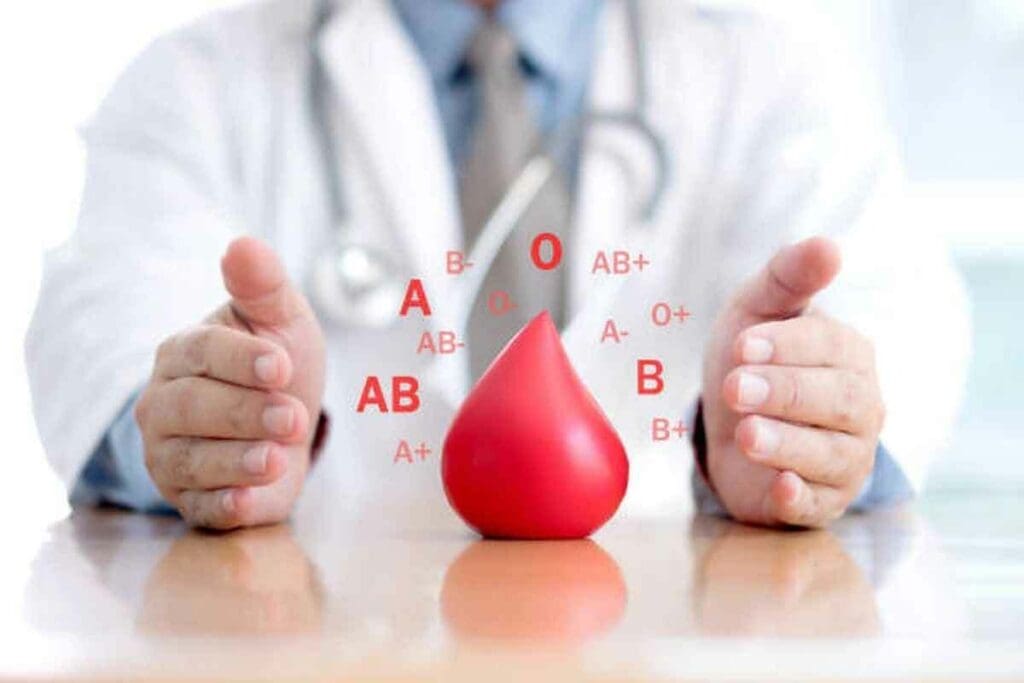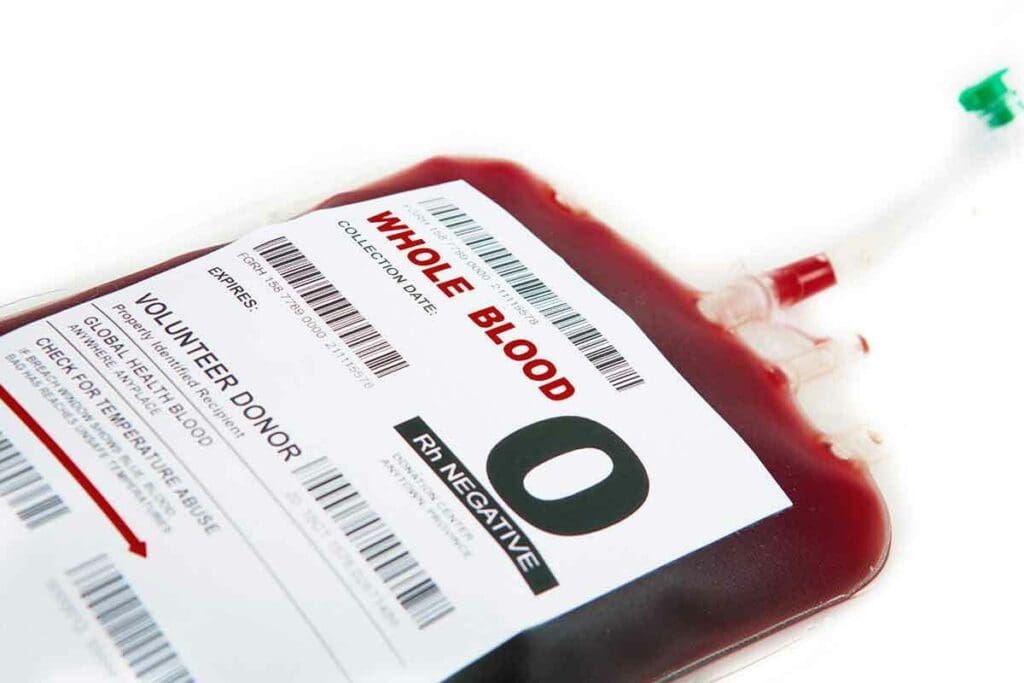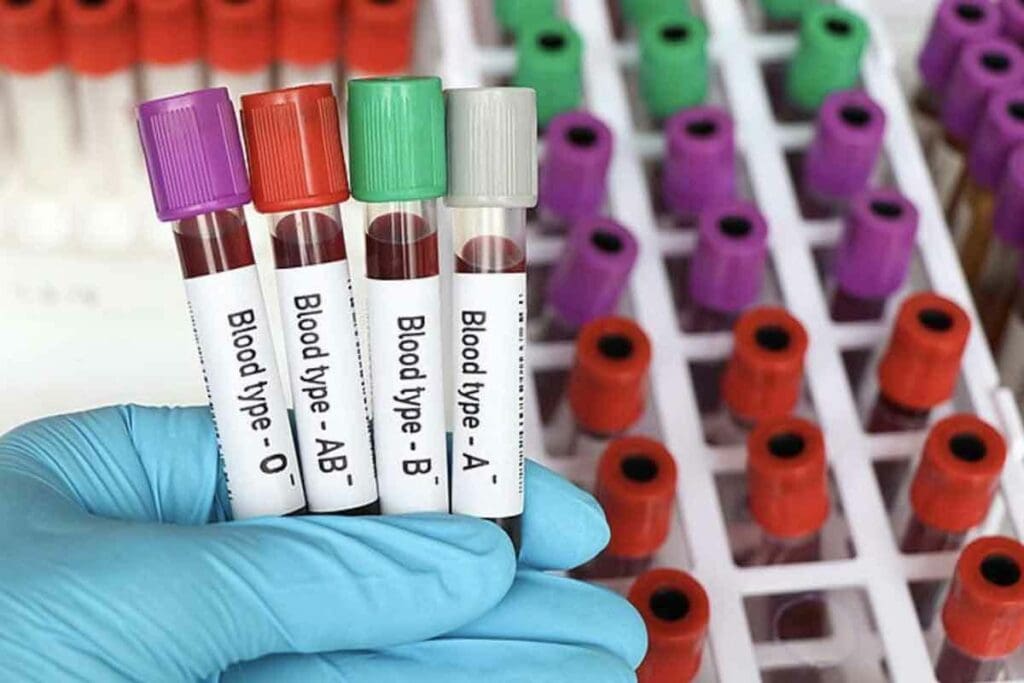Last Updated on November 14, 2025 by Ugurkan Demir

The O positive blood type is key in healthcare, vital for blood transfusions. It’s found in about 37-39% of people, making it the most common. This makes it a cornerstone in hospitals.
At Liv Hospital, patient safety and trust are top priorities. Knowing the facts and benefits of O+ blood is essential. Its ability to mix with other blood types makes it a key asset for medical excellence worldwide.

Knowing your blood type is key any medical needs. O positive blood is very common and important. It’s a big deal in transfusion medicine because it tells us about the blood’s surface.
The ABO blood group system sorts blood into four types: A, B, AB, and O. The Rh antigen adds another layer, making them positive or negative. So, O positive blood is both O type and Rh positive. This system is essential for matching blood safely.
O positive blood is found in about 37.4% of people worldwide. It’s very needed for transfusions. The need for O-positive blood is high because it works with many other types in emergencies.
This blood type is vital for blood banks everywhere. It’s not just for regular care but also for urgent situations. Having O-positive blood can save lives in emergencies.

Blood types are sorted into four main groups: A, B, AB, and O. This sorting is key to knowing if blood can be safely given to someone else. It’s very important in transfusion medicine.
The ABO system looks at whether red blood cells have A or B antigens. People with type O blood have neither. This makes type O blood a good match for many, in some cases.
The Rh factor is a protein on red blood cells. If you have it, you’re Rh positive; without it, you’re Rh negative. O positive blood is Rh positive, which means it can be given to other Rh positive blood types.
| Blood Type | ABO Antigens | Rh Factor |
| O Positive | None | Present |
| O Negative | None | Absent |
| A Positive | A | Present |
Knowing how ABO blood groups and Rh factors work is vital for safe blood transfusions. This knowledge helps doctors choose the right blood for patients.
O positive blood type compatibility is vital for blood transfusions to be successful. It’Medical professionals need to knowo can receive O-positive blood and who can donate it.
People with O-positive blood can give to those with A+, B+, AB+, and O+ blood types. This is why O-positive blood is so valuable in emergencies. It’s used when there’s no time to check a patient’s blood type.
O-positive individuals can get blood from O+ and O− donors. This is key for patients who often need blood transfusions.
| Blood Type | Can Donate To | Can Receive From |
| O+ | A+, B+, AB+, O+ | O+, O− |
It’s critical to understand these rules for safe transfusions. Knowing who can receive O-positive blood and who can donate it helps healthcare providers make the right choices in urgent situations.
In blood transfusions, O-positive and O-negative blood types are not just about the Rh factor. They are about matching blood for safety and compatibility. Both are key in medical emergencies, but they affect patient care differently.
O-negative blood is the universal donor type. It has no A or B antigens and is Rh negative. This makes it safe for all blood types, essential in emergencies when time is short.
Key characteristics of O-negative blood include:
O-positive blood is widely used but has its limits. It’s safe for patients with Rh-positive blood types (A+, B+, AB+, O+). But it’s not safe for those with Rh-negative blood types.
This shows why we need a diverse blood supply. It meets different patient needs.
O-negative blood is rare, found in only 6-7% of people. Its rarity and universal compatibility make it very valuable for emergencies and specific patient needs.
The demand for O-negative blood often exceeds the supply. This highlights the need for regular donations from eligible donors.
In summary, knowing the differences between O-positive and O-negative blood is vital for transfusions. While O positive is common, O negative’s universal compatibility is critical in emergency medicine.
O positive blood type is key to the global blood supply. Knowing its traits is essential for safe transfusions. Here are nine key facts about its importance.
O positive blood type is the most common globally. About 38% of people have O-positive blood. This is a big deal, given the wide range of genetic backgrounds worldwide.
In emergencies, O-positive blood is often used. It’s compatible with many other blood types. This makes it essential in emergency medicine, where quick transfusions can save lives.
Even though it’s common, O-positive blood can run low. This happens due to seasonal donation changes and higher demand at certain times. Blood banks have to be careful to keep enough on hand.
O-positive blood is very valuable for patients needing frequent transfusions. This includes those in surgery or with certain health issues. Its safety makes it a good choice for emergency transfusions.
Some important facts about O-positive blood include:
Learning about the O positive blood type shows its vital role in healthcare. It also stresses the need for ongoing blood donations to support medical care.
Having O O-positive blood type comes with both good and bad sides. Scientists are always studying how different blood types affect our health. O positive blood is no different.
Research shows that O-positive blood types might face less risk of heart problems. This could be because of how blood type affects inflammation and clotting. For example, a study found that non-O blood types face a higher heart disease risk than O types.
There’s more to O positive blood type than heart health. Some studies hint at different disease risks for O-positive blood types. For instance, they might face a lower cancer risk, but more research is needed to be sure.
It’s important to remember that blood type is just one piece of the health puzzle. Lifestyle, genes, and environment also shape our health.
In summary, an O positive blood type might offer some health perks, like better heart health. Butit’s key to live a healthy life and talk to doctors to take care of your health.
O positive blood is very important, mainly in emergencies. It’s often needed because it works well with many blood types. This makes it a key choice for quick transfusions.
In emergencies, knowing the patient’s blood type is hard. That’s why O O-positivelood is so important. It’s safe for Rh-positive people, even when we can’t check the patient’s type right away.
Studies show that using O-positive blood can help patients more in these situations.
Hospitals always work to have enough O-positive blood ready. They balance how much they have with how much they need. They also make sure the blood is kept in good condition.
For surgeries, having the right blood is key. O-positive blood is often used for Rh-positive patients. Doctors plan for blood transfusions, considering the patient’s type and other factors.
In summary, O-positive blood is essential in hospitals, for emergencies and surgeries. Its importance comes from its compatibility and the urgent need for transfusions in critical situations.
Donating O-positive blood is key to helping others. It’s important to know the rules to donate safely and effectively. O positive blood is in high demand for medical needs and surgeries.
How often you can donate O-positive blood depends on your health and the type of donation. Usually, you can give whole blood every 56 days. It’s vital to stick to these rules for your safety and the quality of the blood.
Positive blood donations greatly help patients. This blood is very useful in emergencies when time is of the essence. Your donation can aid patients in surgery, cancer treatment, and trauma care. By donating often, you help keep the blood supply steady, which is essential for hospitals.
To make your donation go smoothly, consider these tips:
By following these guidelines and tips, O-positive blood donors can significantly impact patients’ lives.
Patient-centered care in transfusion medicine is getting better thanks to new medical methods. Liv Hospital is leading this change. They make sure patients get the right blood type for their health needs. This makes transfusions safer and more effective.
Liv Hospital is a leader in using blood type knowledge in patient care. They use new medical methods to tailor blood transfusions to each patient’s needs.
Transfusion medicine now focuses more on the patient. It looks at their blood type, medical history, and specific needs. This is important during surgeries or emergencies.
| Aspect | Description | Benefit |
| Blood Type Management | Advanced testing and matching | Enhanced safety and efficacy |
| Patient-Centered Care | Personalized treatment plans | Improved patient outcomes |
| Innovations in Healthcare | Integration of the latest medical research | Better healthcare delivery |
Liv Hospital aims for ‘5-star tourism healthcare’. They provide top-notch medical care and a welcoming experience for international patients. They make blood donation and transfusion easy with the latest technology.
In conclusion, Liv Hospital’s advanced blood type management is improving patient care. By focusing on the patient and using new healthcare innovations, Liv Hospital is raising the bar in transfusion medicine.
O positive blood is key to the global blood supply. It’s vital for emergency transfusions and ongoing care. Its wide use and compatibility make it essential in hospitals.
Keeping enough O-positive blood is critical. It’s often needed in hospitals and emergencies. Its special traits, like being compatible with some blood types, make it a must in transfusions.
It’s important to encourage O-positive blood donations. Knowing its value and supporting donation efforts helps patients everywhere. By doing so, we all help save lives.
O positive blood is very common and very important in hospitals. It works well with many other blood types. This makes it key for emergency blood transfusions.
The main difference is the Rh factor. O positive blood has it, while O negative does not. This affects who can get the blood and how it’s used.
No, O positive blood isn’t for everyone. It’s okay for A+, B+, AB+, and O+ types. But, it’s not safe for Rh-negative types unless they’re O positive or have been exposed to Rh-positive.
People with O-positive blood might have a lower risk of heart disease. Studies suggest type O blood could be protective. But more research is needed to be sure.
How often O-positive people can donate blood depends on local rules. Usually, it’s every 56 days for whole blood donations.
O-negative blood is rare because it lacks A and B antigens and the Rh factor. It’s very valuable because it can be given to anyone in emergencies. This is because it’s compatible with all blood types.
Yes, in emergencies, O-positive people can get O-negative blood. It’s not the first choice because of the risk of reacting to the Rh factor. But, in life-or-death situations, it’s often the best option.
O positive blood is common worldwide. Its frequency varies by population. It’s very important in hospitals because of its compatibility and commonality.
Liv Hospital uses advanced blood type knowledge in patient care. They make sure transfusions are safe and effective. They consider the ABO blood group system and the Rh factor carefully.
O positive blood is key in emergency transfusions and managing hospital blood supplies. It’s also important during surgeries. Its compatibility makes it very valuable for saving lives.
Subscribe to our e-newsletter to stay informed about the latest innovations in the world of health and exclusive offers!